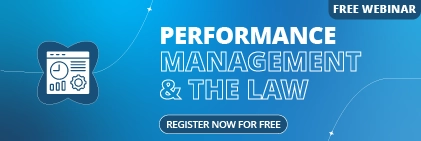Running a small or medium-sized business often means wearing many hats.
You’re managing sales, looking after customers, handling payroll, and making sure your team stays happy and productive.
But as your team grows, so does the challenge. Coordinating shifts, tracking attendance, and staying compliant with workplace laws can quickly become overwhelming.
That’s where workforce management software comes in.
Workforce management software, or WFM software, is designed to help you plan, organise, and oversee your workforce more effectively. It takes care of everyday operational tasks, such as rostering, time tracking, payroll integration, and compliance, allowing you to focus on growth and strategy with valuable time to spare.
In this post, you’ll learn exactly what to look for when choosing workforce management software for your small or medium-sized business.
What Is Workforce Management (WFM) Software?
WFM software is a digital system that helps you organise, track, and optimise how your employees work.
Instead of relying on spreadsheets or paper rosters, WFM software brings all your people-related data together in one platform.
You can:
- Build and share staff rosters instantly
- Track attendance and working hours in real time
- Automatically calculate pay and leave
- Stay compliant with employment laws and awards
For a small or medium business, that means less time wasted on admin and fewer errors that could lead to unhappy staff or compliance issues.
In short, WFM software makes managing your team easier, smarter, and faster. It’s about working on your business, not just in it.
Why SMBs Need WFM Tools
You might be wondering – Do small businesses really need WFM software? The answer is yes, especially as your business expands beyond a handful of employees.
Here’s why it’s so important:
- Efficiency Without Extra Admin – Small and medium businesses often operate with lean teams, which means every hour counts. Workforce management tools automate repetitive tasks, such as creating rosters, approving leave, and calculating overtime. What used to take hours each week can now be completed in just a few minutes.
- Improved Accuracy and Compliance – Keeping up with award rates, penalty rates, and workplace laws can be a headache. One small mistake can lead to underpayment issues or fines. Good WFM software includes built-in compliance features that ensure you stay up to date with current regulations, so you don’t have to track every rule manually.
- Better Communication Across Teams – When everyone knows their schedule and can easily request changes or leave, your workplace runs more smoothly. Employees can log in from their phones to check shifts, swap with a teammate, or submit timesheets—all without the need for endless back-and-forth emails.
- Real-Time Insights for Smarter Decisions – The best decisions come from having the correct data. WGM software gives you access to real-time reports on attendance, productivity, and labour costs. You can identify trends, plan more effectively, and make adjustments before issues escalate into bigger problems.
- Scalability for Growth – What works for a 10-person business might not work for 50. WFM software is designed to grow with you. As your team expands, your software can handle more locations, departments, and employee types—without requiring you to rebuild your processes from scratch.
The result? Less stress, more control, and happier employees.
How WFM Differs from HR Software
It’s easy to confuse WFM software with HR software, but they serve slightly different purposes.
HR systems are primarily focused on people management, including storing employee records, onboarding, and conducting performance reviews.
WFM software, on the other hand, focuses on operational management, including scheduling, time tracking, payroll, and compliance.
Many modern platforms, such as Sentrient, combine both into a single, straightforward solution, offering SMBs the best of both worlds.
Common Workforce Management Challenges for SMBs
Running a small or medium-sized business means every day brings a new challenge, and managing your team is often one of the biggest.
As your business grows, keeping track of schedules, pay, and compliance can quickly become overwhelming.
Without the right systems in place, it’s easy for minor problems to pile up. Missed shifts, payroll errors, and unhappy employees can all take their toll on your business reputation and productivity.
Let’s look at some of the most common workforce management challenges small and medium-sized businesses face.
1. Manual Scheduling and Rostering Pain Points
If you’re still building rosters with spreadsheets, you already know how time-consuming and frustrating it can be.
Every week, you must balance staff availability, shift preferences, skill levels, and business demands, all while trying to keep everyone satisfied.
Manual scheduling often leads to:
- Overlaps and gaps in shifts
- Last-minute changes that create confusion
- Human error, which can result in understaffing or overtime blowouts
And let’s be honest, nobody enjoys the endless emails or texts asking, “Can I swap shifts?”
When rosters are unclear or unfair, it affects morale. Employees start feeling unappreciated or burnt out, and managers end up spending more time fixing mistakes than focusing on the business.
This is where WFM software can make an immediate difference. Automated rostering tools can create optimised schedules based on staff availability, qualifications, and labour costs – in minutes, not hours.
2. Payroll and Compliance Struggles
Payroll is one of those tasks that must be exactly right, every time.
However, when your data is spread across multiple systems—timesheets in one place, leave requests in another—errors become inevitable.
Small mistakes in calculating overtime, allowances, or penalty rates can lead to underpayments, which are not only frustrating for your team but can also put you at risk of breaching workplace laws.
For small and medium businesses, staying compliant with employment laws and regulations can be tricky. Laws change, rates are updated, and manual tracking can’t keep up.
The risk isn’t just financial – it’s reputational. Once trust is lost over pay or fairness, it’s hard to rebuild.
WFM software eliminates this guesswork. It ensures your payroll calculations are accurate and up to date with the latest regulations, automatically applying the right rates and conditions. That means you can pay your staff correctly and confidently every time.
3. Lack of Real-Time Insights
Many business owners make decisions based on their “gut feel” simply because they lack access to real-time data.
You might not know who’s working where, how much overtime has been logged, or whether labour costs are on budget until it’s too late.
Without data, it’s challenging to identify trends, manage performance, or identify areas for improvement. You might be overstaffed one week and short-handed the next, all because you’re making decisions with outdated information.
Real-time insights provide visibility into how your workforce operates on a day-to-day basis. For instance, you can see who’s clocked in, monitor attendance, and track productivity across departments.
That visibility allows you to make adjustments quickly, rather than reacting after the fact.
When you can see the bigger picture clearly, it’s much easier to plan, control costs, and make smarter business decisions.
4. Employee Engagement and Communication Gaps
Your team is at the heart of your business, but without clear communication, even the best teams can struggle to succeed.
Miscommunication often happens when rosters aren’t shared on time, when shift changes aren’t properly recorded, or when employees don’t have an easy way to access their schedules.
That frustration can quickly lead to disengagement and turnover.
Employees want transparency. They want to know when they’re working, how they’re paid, and how to request changes without hassle. When individuals don’t feel informed or heard, their motivation drops, and productivity often follows.
WFM software improves this by creating a central communication hub. Employees can check rosters, request leave, or update their availability right from their mobile device. Managers can approve requests, send updates, and ensure everyone is always on the same page.
Better communication leads to fewer misunderstandings, happier employees, and a smoother overall operation.
5. Scaling Without Chaos
When you first start your business, it’s easy enough to manage a handful of employees with simple tools.
However, as your team grows and you begin managing multiple locations, departments, or shift types, things can become complicated quickly.
Spreadsheets and manual systems can’t keep up. Data gets lost, mistakes multiply, and it becomes harder to see what’s happening across your business.
Many small businesses hit this point and realise they’ve outgrown their existing processes. The systems that once worked start holding them back.
WFM software helps you scale smoothly. Whether you’re adding new employees, expanding into new locations, or hiring seasonal staff, the software adapts to your needs. Everything stays centralised, visible, and manageable, no matter how large your team becomes.
Features to Look for in WFM Software
By now, you know why WFM software is essential for small and medium-sized businesses. The next step is to understand what to look for when comparing different solutions.
The right software should make life easier – not more complicated. It should help you save time, reduce errors, and give you confidence that your business is running smoothly. But with so many tools out there, it’s easy to get lost in the noise of features and technical jargon.
Let’s simplify things. Below are the core features that every small and medium-sized business should prioritise when choosing WFM software.
1. Smart Employee Scheduling
Scheduling is one of the most time-consuming parts of managing a team.
Whether you’re running a café, a retail store, or a care service, creating fair and efficient rosters can quickly become a full-time job.
A sound WFM system takes the stress out of scheduling by automating much of the process. Instead of manually dragging names into a spreadsheet, you can:
- Build rosters in minutes using templates or AI-assisted suggestions.
- Automatically fill shifts based on staff availability, qualifications, or hours worked.
- Send notifications instantly when rosters are published or updated.
- Allow staff to swap shifts (with manager approval) directly through the platform.
This means no more last-minute texts or messy group chats to organise cover.
2. Time & Attendance Tracking
Accurate time tracking is at the heart of effective workforce management.
Relying on paper timesheets or manual clock-ins often leads to errors, disputes, and lost productivity.
A robust WFM system includes automated time and attendance tracking, enabling employees to clock in and out from their phones, tablets, or a workplace kiosk. Many systems even use GPS or geofencing to ensure staff are signing in from the correct location.
Benefits include:
- Eliminating time theft – no more “buddy punching” where one employee clocks in for another.
- Real-time visibility – see who’s on site or running late at any given moment.
- Accurate payroll data – hours worked flow directly into your payroll system without manual entry.
Maintaining this level of transparency enables you to plan staffing levels more effectively and avoid costly overtime surprises.
3. Payroll & Compliance Integration
Getting payroll right isn’t optional – it’s essential.
For many SMBs, payroll is where things can easily go wrong due to complex pay rules, overtime calculations, and compliance requirements.
Look for WFM software that integrates directly with your payroll system (such as Xero, MYOB, or QuickBooks). When time and attendance data automatically syncs with payroll, you reduce double-handling and ensure your team is always paid correctly and on time.
Key Compliance Features to Consider:
- Automatic award interpretation: The software should automatically calculate correct pay rates, penalty rates, and allowances according to your industry or award.
- Leave and entitlements tracking: Ensure that leave balances and accruals are accurately managed.
- Audit trails: Keep a record of timesheets, pay changes, and approvals for peace of mind.
Compliance errors can be costly and damaging, especially for growing businesses.
Integrated payroll and compliance features help you stay ahead of regulations and avoid fines or underpayment issues.
4. Employee Self-Service Access
One of the biggest frustrations for employees is feeling out of the loop.
They want easy access to their schedules, payslips, and leave balances without having to chase HR or management for updates.
Employee self-service features empower your team by giving them control over their own information. Staff can:
- View upcoming shifts from their phone.
- Request time off or swap shifts with colleagues.
- Update their availability and contact details.
- Access payslips and timesheets as needed.
When employees can manage their own information, you save time, and they feel more trusted and engaged. It’s a win-win.
5. Reporting & Analytics
You can’t improve what you can’t measure.
That’s why reporting and analytics tools are crucial for getting the most out of your workforce management software.
Good reporting provides valuable insights into how your business is performing, enabling you to make smarter, data-driven decisions.
Key Metrics to Track:
- Attendance and punctuality trends
- Labour cost vs revenue
- Overtime and leave usage
- Productivity across teams or departments
For example, if you notice that certain days consistently have high overtime costs, you can adjust your scheduling accordingly. Alternatively, if specific roles have higher absence rates, you can investigate the underlying causes.
Many systems include customisable dashboards that give you real-time data at a glance.
Managers can quickly identify where attention is needed without having to dig through endless spreadsheets.
Conclusion
By now, you can see that choosing the right WFM software is about much more than ticking boxes.
It’s about finding a system that fits your business, supports your people, and simplifies your day-to-day operations.
The right software does the heavy lifting for you – giving you time back to focus on what really matters: running your business and supporting your team.
Sentrient has been explicitly designed for small and medium-sized businesses that want to manage their workforce effectively without unnecessary complexity.
Sentrient provides you with everything you need to manage your people efficiently, stay compliant effortlessly, and build a more engaged and productive workplace.
Ready to discover how Sentrient can simplify workforce management for your business?
Book a Free Demo with Sentrient Today.
FAQs
1. What is Workforce Management (WFM) software used for?
WFM software helps you plan, organise, and track your employees’ work more efficiently. It takes care of tasks such as scheduling, time tracking, payroll integration, and compliance so you can save time and reduce admin errors. For small and medium businesses, it’s an easy way to stay organised and keep everything running smoothly.
2. Is Workforce Management (WFM) software different from HR software?
Yes, though they often overlap. HR software primarily focuses on people management, including storing employee records, onboarding, and conducting performance reviews. WFM software, on the other hand, deals with daily operations such as rostering, attendance, and payroll. Many platforms, such as Sentrient, combine both, providing a comprehensive solution in one place.
3. How can Workforce Management (WFM) software help with compliance?
Good WFM software automatically updates with the latest award rates, penalty rates, and labour laws. It applies the correct pay rules and keeps detailed audit trails, helping you stay compliant and avoid fines. With built-in alerts and accurate record-keeping, you can rest easy knowing you’re meeting your legal obligations.
4. What’s the best Workforce Management (WFM) software for small businesses?
The best software depends on your specific needs, but look for something easy to use, that integrates seamlessly with your payroll system, and provides robust compliance support. Sentrient is a popular choice for small and medium businesses because it’s designed specifically for Australian SMBs, combining WFM, HR, and compliance in a straightforward system.
5. Can Workforce Management (WFM) software integrate with payroll systems like Xero or MYOB?
Absolutely. Most modern WFM platforms, including Sentrient, integrate directly with payroll software such as Xero, MYOB, and QuickBooks. This ensures that your time and attendance data are automatically incorporated into payroll, reducing double-handling and eliminating errors.
6. How long does it take to set up Workforce Management (WFM) software?
It depends on the size of your team and the complexity of your setup. For most small businesses, you can be up and running within a few days. Platforms like Sentrient make setup simple, offering guided onboarding and local support to help you get started quickly and confidently.
7. Why should small and medium businesses choose Sentrient?
Because Sentrient is built for businesses like yours, it’s simple, scalable, and compliance-ready. You can manage rosters, time tracking, payroll, HR policies, and learning in one platform – without needing multiple systems. Plus, you’ll have access to friendly local support that genuinely understands your challenges.





